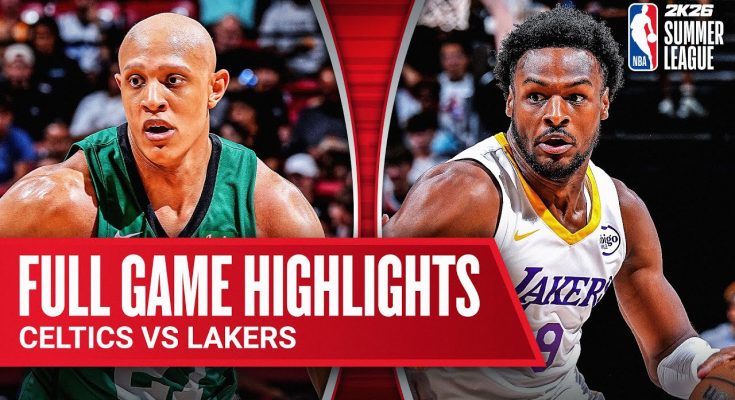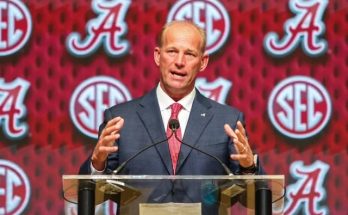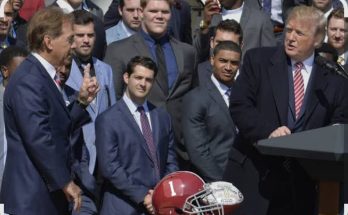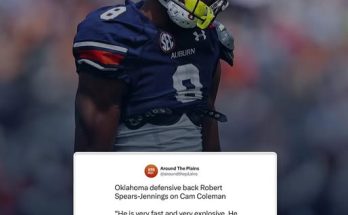July 17, 2025: at the Thomas & Mack Center in Las Vegas, the Boston Celtics faced off against the Los Angeles Lakers in a Summer League showdown. Boston emerged victorious, 87–78, improving their record to 3–1, while the Lakers fell to 1–3 Wikipedia+12ESPN.com+12ESPN.com+12. Officiated by Tyler Mirkovich and Jessyca Christopher, this game was broadcast on ESPN/ESPN+ and drew attention for its mix of emerging prospects and familiar names ESPN.com+5ESPN.com+5ESPN.com+5. The Celtics covered the 4.5-point spread, and the final score came in slightly under the projected total of 175.5 ESPN.com+2ESPN.com+2ESPN.com+2.
In Summer League, the emphasis isn’t solely on winning—it’s about player development and evaluation. Nevertheless, this matchup evoked echoes of the storied Celtics–Lakers rivalry, offering glimpses of the next generation battling in that legacy.
Boston asserted control early. After a competitive first quarter, they held a narrow lead, but the second quarter proved decisive: Boston outscored the Lakers 19–9, building a meaningful cushion. They didn’t relent; a dominant 25–20 third quarter and a calm, composed 22–23 fourth quarter sealed the win Cadena SER+1The Times of India+1.
Offensive efficiency wasn’t dazzling. Boston shot just 38.5% from the field and converted 31.6% of their threes (12-for-38), but they capitalized on free throws (15-for-22, 68.2%) and controlled the boards with 42 total rebounds, including 15 offensive ESPN.com. The Lakers, despite shooting slightly better overall (44.3%), struggled from deep (21.4%) and committed 21 turnovers—two more than Boston . Rebounding was another battle Boston won convincingly: 42 to 31 .
Let’s dive into star performances.
Jordan Walsh led Boston with 17 points on 6-for-11 shooting, along with 3 rebounds and 2 assists; he was a +8 on the floor The Times of India+2ESPN.com+2CelticsBlog+2. His reliable midrange and calm playmaking made him a perfect fit for the Summer League pace.
Hugo González delivered a strong showing in 29 minutes: 13 points (4‑for‑11 FG, 2‑for‑4 from deep), 5 rebounds, 2 assists, 1 block—and eight minutes of frustrating misses? That’s correct—8 turnovers AS+2ESPN.com+2Cadena SER+2. His game had flashes of two-way potential: notably, he forced eight turnovers from Bronny James and swatted a few misses thanks to active hands CelticsBlog+1AS+1.
Baylor Scheierman, known as a Swiss‑Army knife, chipped in with 9 points, 5 rebounds, 6 assists, and 1 steal, though his shooting was uneven (2‑for‑14 FG, 2‑for‑11 from three). He anchored second-unit ball movement ESPN.com+3ESPN.com+3CelticsBlog+3.
Max Shulga added 4 points and 6 rebounds in 20 minutes; he went 3‑for‑8 from the field and grabbed all six boards in a quiet but effective contribution CelticsBlog+4ESPN.com+4ESPN.com+4.
Kenneth Lofton Jr. showed energy off the bench with 12 points (5‑for‑8 FG, 2‑for‑4 threes) and 7 rebounds, though he was saddled with 5 turnovers in just 20 minutes AS+9ESPN.com+9The Times of India+9.
On the Lakers side, Bronny James topped the scoring chart with 18 points on an efficient 7‑for‑13 shooting, including 3‑for‑4 from free throws. He added 3 rebounds, 5 assists—and 8 turnovers Cadena SER+2Yahoo Sports+2AS+2. His +/- of –3 reflected mixed results ESPN.com+2Cadena SER+2The Times of India+2.
DJ Steward (14 points) and Christian Koloko (12 points) also contributed, with Koloko adding 6 rebounds and 2 steals CelticsBlog+4ESPN.com+4ESPN.com+4. Cole Swider followed with 12 points (4‑for‑10 FG, 2‑for‑7 from three) ESPN.com+4ESPN.com+4ESPN.com+4, but the Lakers failed to generate consistent second-quarter offense—mustering just nine points .
A remarkable subplot was the defensive battle between Hugo González and Bronny James. Hugo forced an impressive eight turnovers, disrupting Bronny’s rhythm. Though James scored 18, he was held scoreless in the first half, a testament to Hugo’s pressure Cadena SER+1AS+1. It was, as one Spanish outlet put it, “Hugo sí, Bronny no”—Hugo yes, Bronny no AS.
Boston’s board control and defense underpinned their win: they out-rebounded LA by 11, produced two more steals (13 to 9), and contained the Lakers’ perimeter shooting . Meanwhile, LA compensated with 12 blocks—driven by Koloko’s 6—but Boston’s balanced attack smoothed over gaps .
This game is also telling in broader developmental terms: Boston’s roster blends 2025 draft picks like Hugo, Amari Williams, Max Shulga, alongside undrafted players and holdovers like Jordan Walsh, Baylor Scheierman, and Miles Norris ESPN.com+4CelticsBlog+4ESPN.com+4. The Lakers leaned on 2024 picks Bronny James and Dalton Knecht and early breakout Cole Swider ESPN.com+4CelticsBlog+4ESPN.com+4.
From a Celtics standpoint, Jordan Walsh continues to assert himself with consistent 17‑plus point games—he hit 17 tonight, 13 in the previous game, and 17 earlier in the week, although a technical disqualification marred his Sunday appearance CelticsBlog+1The Times of India+1. Hugo González also shows strong two‑way upside, though his ball‑handling will be a concern moving forward. Kenneth Lofton Jr.’s energy and multi‑positional scoring further reinforce that Boston is building a deep talent pool.
The Lakers, meanwhile, are still searching for consistency. Bronny’s flashes are promising—he scored 18 tonight—but eight turnovers highlight a lack of polish AS+7ESPN.com+7ESPN.com+7. Dalton Knecht and Cole Swider continue additive scoring presence, but the Lakers’ second‑quarter slump demanded correction ESPN.com+6CelticsBlog+6ESPN.com+6. Injuries have limited some rotation strength , and defensively, without Boston collapsing inside, the big men like Koloko and Bazley were forced into heavy roles.
Statistically, the game offered educational insights into high‑level Summer League play:
-
Turnovers are critical. Both teams logged high totals—19 for BOS, 21 for LAL—and those extra possessions can decide tight games. Boston managed them a tad better.
-
Rebounding wins extra possessions. Boston’s 15 offensive rebounds kept possessions alive and allowed for more scoring chances.
-
Efficient scoring vs. volume. Boston was lower percentage overall but managed better from the line. Lakers hit better FG%, but their lack of free throws and high turnover cost them.
-
Quarter-to-quarter momentum matters. Boston’s defensive clamp in Q2 (holding LA to 9 points) shifted the game decisively.
-
Balanced bench contributions. Both teams leaned on players beyond the starters—Boston got contributions from Lofton Jr. and Scheierman, Lakers from Swider and Steward. Balanced benches are key in Summer League success.
For players like Walsh and González, this is a proving ground. Scouts and coaches will note their ability to take initiative, defend under pressure, hit shots, and control tempo. On the Lakers’ side, Bronny James will likely hear praise for his second-half scoring but need reminders to tighten control and reduce giveaways.
As Summer League approaches its semi-finals phase (July 19–20), Boston’s win puts them in position to compete for a top-four seed CelticsBlog+4ESPN.com+4ESPN.com+4. Lakers, with a 1–3 record, will likely play a consolation game—but the experience gained remains invaluable.
Beyond the box score, here are some educational takeaways for basketball aficionados and analysts:
-
Understanding +/-: A player’s plus‑minus reflects team net points while they’re on court—it’s context‑heavy. Jordan Walsh’s +8 is meaningful: his minutes coincided with Boston outscoring LA by eight.
-
Turnover impact: Each turnover not only eliminates a scoring chance but often leads to fast-break points for the opposition.
-
Bench scoring depth: Teams that develop cohesive bench units can outlast starters-heavy opponents.
-
Summer League as a lab: Here, small sample size performances can influence G-League assignments, two-way contracts, or roster spots. Every possession matters—even in an exhibition format.
As an educational point, parsing a box score like this teaches us to look beyond raw points. Consider efficiency (FG%, 3P%, FT%), rebounding rates, assist‑to‑turnover ratios, defensive stats (steals, blocks), plus‑minus contexts, and momentum control by quarter. These metrics create a holistic sense of who’s truly impacting games.
For fans, this game reinforced that the Lakers’ next generation—Bronny, Swider, Knecht—has talent but needs polish and consistency. For Celtics fans, there’s palpable excitement around Walsh, González, and emerging bigs like Lofton Jr. and Bassey (the latter noted earlier in the week) .
Looking ahead, Boston will aim to close group play strong and possibly push for top-four seeding. The Stein Group sees them riding momentum. For Los Angeles, the remainder of the Summer League is a chance to shake off the slump, regain confidence, and refine the rotation under Coach Beau Levesque.
This game, in microcosm, highlights multiple classic basketball lessons: the weight of second-quarter runs, the power of bench depth, the sacrifice of turnovers, and the fun of watching future talent develop. So while it lacked the glitz of NBA regular-season marquee matchups, the tactical depth and player narratives make it incredibly instructive.
To wrap up, the Celtics’ 87–78 win over the Lakers on July 17, 2025, exemplifies how even Summer League box scores offer layered insight into player development, stat importance, and game outcomes. Whether you’re a coach, an aspiring analyst, or a curious fan, diving into these numbers reveals the sport’s strategic underpinnings and the rising talent shaping tomorrow’s league.



